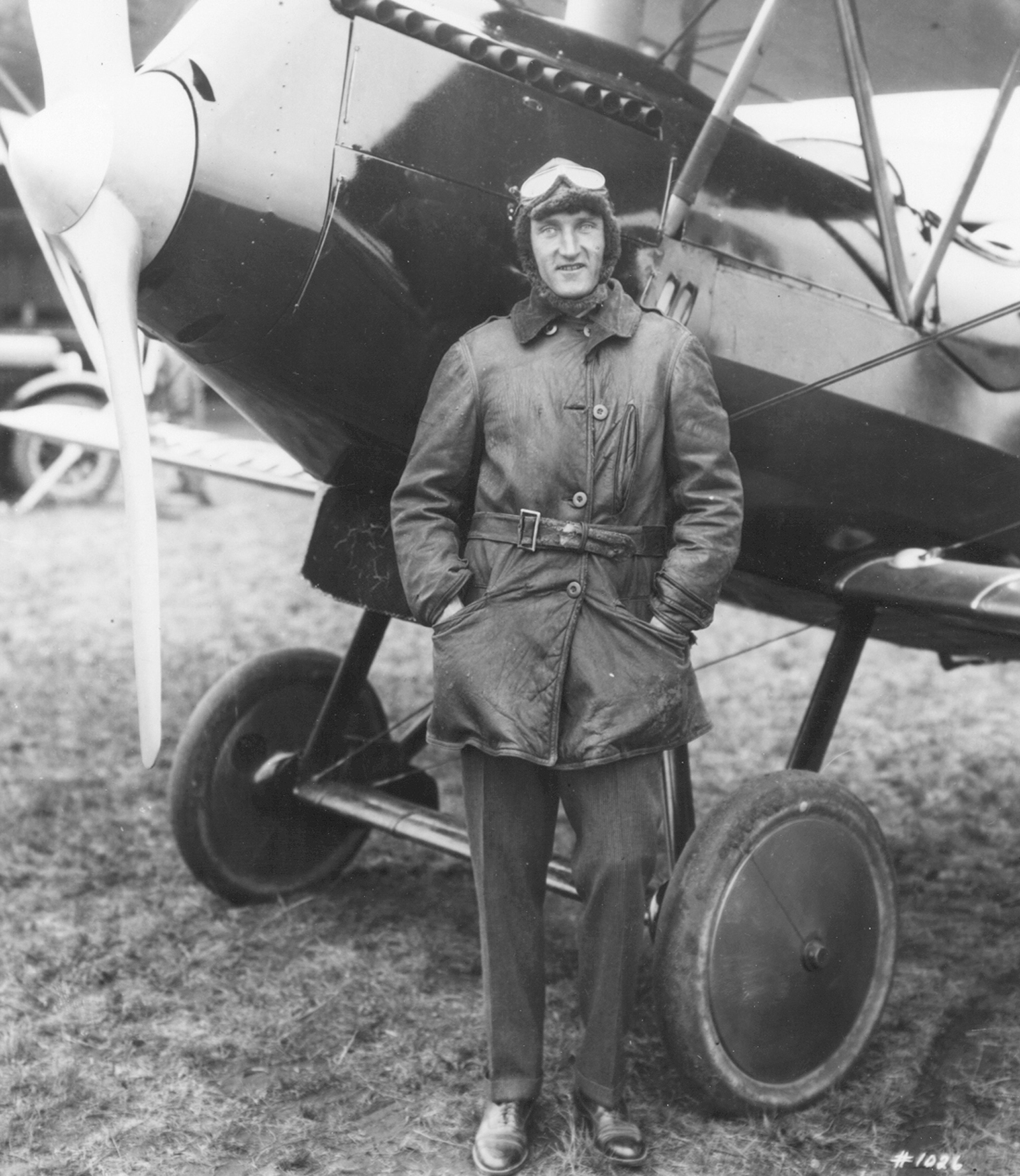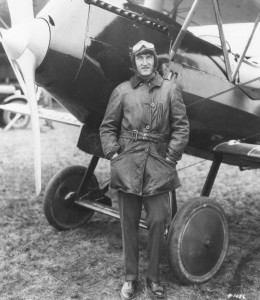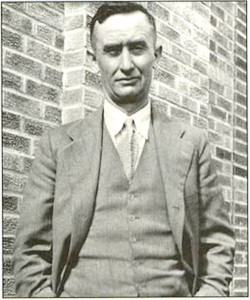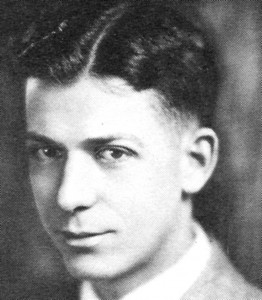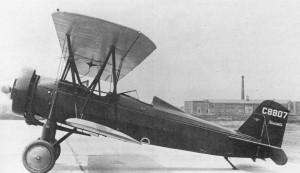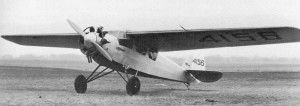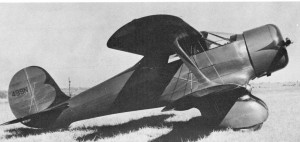By Daryl Murphy
The name Travel Air is famous throughout the aviation world as a builder of early biplanes that were stylish, strong and fast. The names of the founders—Beech, Cessna and Stearman—are also famous, but they couldn’t have had more diverse design philosophies. Nor could they have chosen a worse time to get into the airplane business.
The time was 1925. World War 1 had finished just a bit more than six years earlier, and the country’s aviation mainstay was the surplus Curtiss JN-4 “Jenny,” which could be bought for a few hundred dollars. While it was primarily used as a trainer, the Jenny was not the gentle, forgiving airplane that some legends would have you believe. However, its wood, wire and muslin airframe was easy to repair with nearly any material at hand—a plus, because the opportunity presented itself almost daily. Also, its water-cooled OX-5 engine was at best only semi-reliable, so most pilots of necessity were experts in keeping it alive.
It was during this bear market period that Walter Beech, Lloyd Stearman and Clyde Cessna decided it was time to cast their individual lots together and build airplanes for a living. While some call their decision foresight, the three knew the Jenny couldn’t go on forever and would eventually have to be replaced. New developments had to be made by someone, and they all had the experience to make it happen.
Unfortunately, their experience was from three different perspectives. Beech and Stearman were biplane men, as were most designers of the twenties. Cessna preferred monoplanes.
Stearman was the only one of the trio with formal design credentials. Beech was a test and demo pilot/salesman and Cessna a self-taught airplane builder. Stearman and Beech were employed by the Laird Airplane Co., which in 1924 became Swallow, when Matty Laird left for greener pastures. Stearman’s first design for the new company was the New Swallow, which would later be hailed by Joseph Juptner in his “U.S. Civil Aircraft” series as “the first new and practical approach to the light commercial type airplane,” the first to break away from the old school of design.
Although the New Swallow was revolutionary, it still used wood for its airframe, and Stearman and Beech both favored welded steel structures. But sales were brisk, and Swallow management saw no reason to go the more expensive route, so Beech and Stearman jointly resigned and went looking for a backer.
They were both acquainted with Clyde Cessna, who built the first airplane in Wichita in 1916-17. By 1924, he had returned to a farm he owned near Rago, Kan., about 50 miles west of town, so the two paid him a visit. While they needed a man of his ability and reputation at Travel Air Mfg. Co., they probably didn’t ignore the fact that Cessna had salted away a few dollars that might aid a growing company.
Cessna was a unanimous choice for president. Apparently, he had come up with $6,200, Beech had contributed about $5,700 and Stearman furnished $700. Beech was named vice president and Stearman treasurer.
Stearman’s first design was the three-place Travel Air 2000 biplane, aka “Elephant Ears,” because of its extended ailerons, and the “Wichita Fokker,” because of its similarity to the World War I German design. It turned out it was probably the best OX-5 powered airplane ever built. It was also the first production airplane that young Charles Lindbergh ever flew.
Beech was the extrovert of the trio, perhaps the industry’s best salesman. Cessna was more introverted, with a passionate interest in the science of aeronautics. Stearman was even-mannered and quiet; the violinist and lover of classical music had been schooled at Kansas State as an architect. All three had unique ideas and strong opinions about airplanes.
The first Cessna aircraft had started life in 1911 as a Bleriot, but before Clyde Cessna had taught it to fly (after 12 crashes), it had been rebuilt so often it was mostly a Cessna. He subsequently built one airplane a year until 1917, improving each model with the experience he had gained flying in early air shows. They were all monoplanes.
By the end of 1925, Travel Air had sold 19 airplanes; another 46 were built in 1926. Yet Clyde Cessna wasn’t satisfied. He wanted a Travel Air monoplane, but his partners were busy selling all the biplanes they could build. Monoplanes were still something of a novelty that required different and untried structures and techniques to build.
Cessna decided to rent a space in downtown Wichita and work on a new airplane on his own time. Meanwhile, Lloyd Stearman left the partnership in 1926 and started Stearman Aircraft Co. in Venice, Calif. (the first of many that would carry his name throughout his professional life). When the investment money dried up after a year, Stearman was coaxed back to Wichita by local investors and another Stearman Aircraft Co. was incorporated on Sept. 27, 1927.
The first aircraft to come from the new Wichita factory was arguably the best. The Stearman C3B was an open cockpit, three-place biplane powered by a 220-hp Wright J5 engine. 146 copies were sold.
Meanwhile, in the summer of 1926, Clyde Cessna had finished his new monoplane design. Designated the Model A, the high-wing airplane had a semi-cantilever wing, was powered by a 110-hp, 10-cylinder Anzani engine that would pull it to 100 mph, and carried five passengers. When Cessna called Walter Beech and asked him to take a look at it, Beech was so impressed that it became the basis for Travel Air’s first monoplane, the Model 5000. In January 1927, National Air Transport awarded the company a contract for eight Wright J-4 powered aircraft worth $128,676.
In August of that year, Art Goebel made the Model 5000 Woolaroc famous. As the winner of the Dole Derby, it was the first airplane to fly nonstop from the U.S. mainland to Hawaii. Another aircraft had made the trip a month earlier but was ineligible for the prize or the recognition. Ironically, it too was a Travel Air 5000.
Even though he had proved his monoplane philosophy a success, Cessna knew that Beech and the company directors would never give in to his wishes to build an airplane with a full-cantilever wing. When the opportunity came early in 1927, Clyde Cessna told an amicable Walter Beech of his plans and sold him his 179 shares of Travel Air stock at $90 per share.
When reporters asked Cessna about his plans, he told them he planned to stay in Wichita and design, build and sell monoplanes—”the only worthwhile type of aircraft.” His first production aircraft was the Model AA, awarded an approved type certificate, #65, in August 1928. Its full-cantilever wing helped it cruise at 120 mph on 110 horsepower.
At the end of 1928, the Travel Air Co. had built and sold 450 aircraft. That December, a $50,000 administration building was built at its new location on the eastern edge of Wichita. A New York investment firm with ties to the Curtiss Aeroplane and Engine Co. and Wright Aeronautical funded the expansion and materials purchases.
By July 1929, the company had sold 307 aircraft worth $2 million. In August, it was announced that the newly formed Curtiss-Wright Corp. owned controlling interest in Travel Air. The stock market crash of October 1929 seemed to do no immediate harm to Travel Air, but sales began to sag going into 1930. The company’s doors were closed the next year and the operation moved to St. Louis.
Two months before the Crash, United Aircraft and Transport Corporation had agreed mutually with Stearman to a merger, and the biplane manufacturer became the Wichita Division of UAC’s Boeing Aircraft Co. The next June, the corporation bought 30 acres of land on which to build a new plant, which is still part of Boeing Wichita.
Walter Beech had been named to an executive position at Curtiss-Wright, but the corporate life in New York wasn’t for him or his bride and former secretary, Olive Ann Mellor. Defying the business climate of 1932, Walter and Olive Ann Beech used the proceeds he had realized from the Travel Air sale to Curtiss-Wright to form Beech Aircraft the first day of April. All 10 employees directed their attention toward the design and construction of the first Beechcraft. The Model 17 was a five-place cabin biplane with a high speed of 200 mph and a range of 1,000 miles. Remarkably, the “Staggerwing” made its first flight seven months later, meeting or exceeding its performance goals.
All Lloyd Stearman had ever wanted to do was design and build airplanes, but investors mistook his interest and inevitably put him in charge of everything, including sales and marketing. When he finally moved to California for good in 1931, he left the design for the Model 6 behind. Known better as the Boeing Model 75 Kaydet, thousands were built during World War II.

When Lloyd Stearman left Kansas for good in 1931, he left the design for the Model 6 behind. Known better as the Boeing Model 75 Kaydet, thousands were built during World War II.
The whole Travel Air era lasted only eight years, but its partners, collectively and individually, contributed more to civil aviation than anyone before or since. All of the boys from Travel Air—and one of the girls—were inducted into the National Aviation Hall of Fame: Olive Ann Beech in 1973, Walter Beech in 1977, Clyde Cessna in 1978 and Lloyd Stearman in 1989.











